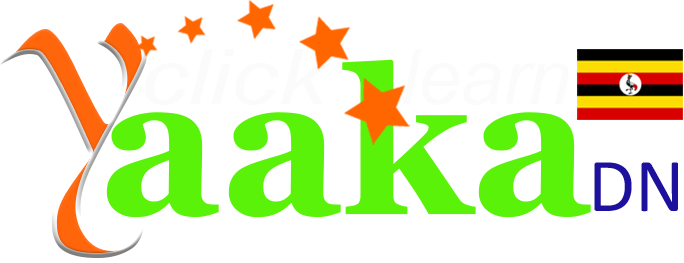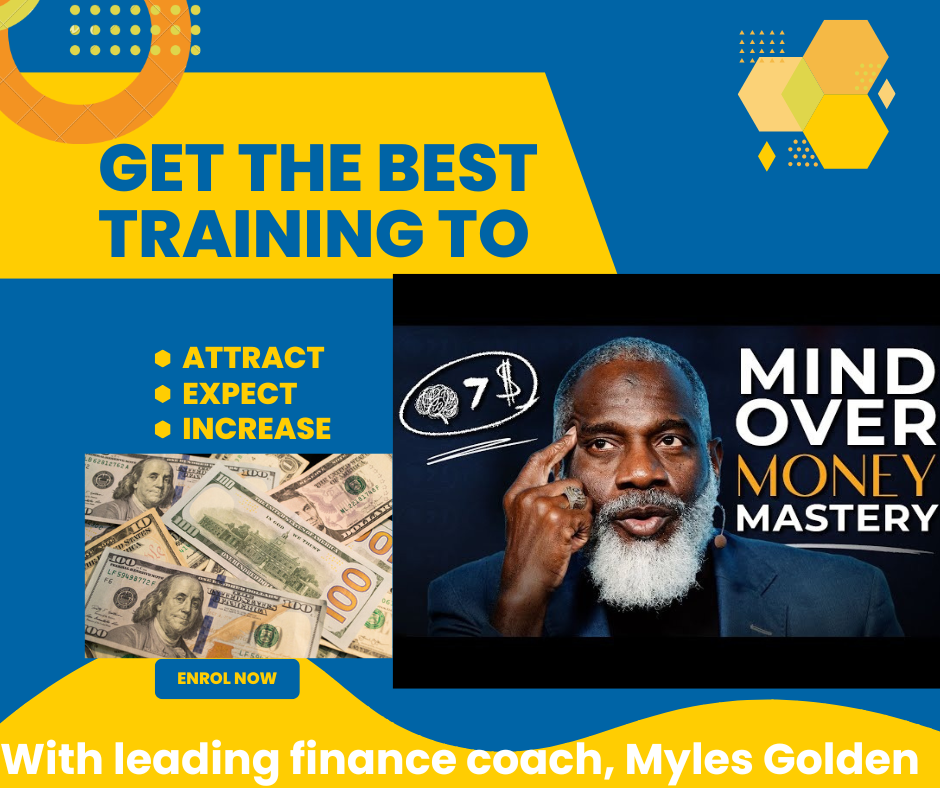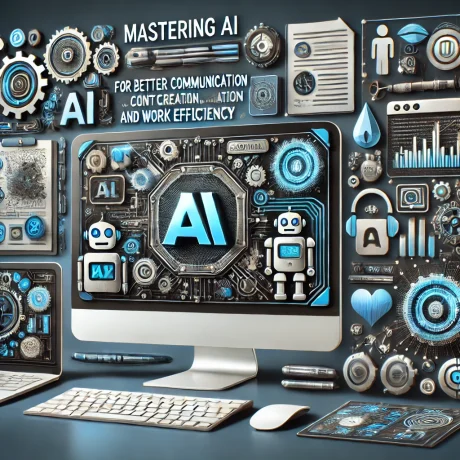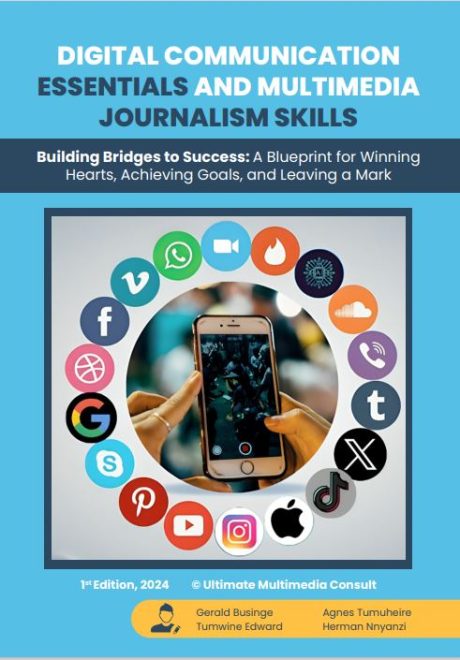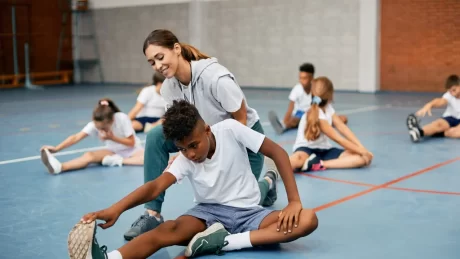6
MEDIA AND INFORMATION LITERACY FOR TEACHERS, POLICY MAKERS & PROFESSIONALS Course Description: To be a successful and useful citizen of the …
MEDIA AND INFORMATION LITERACY FOR TEACHERS, POLICY MAKERS & PROFESSIONALS
Course Description: To be a successful and useful citizen of the 21st Century, there is need for one to master multiple types of literacy beyond the ability to read and write. You need the skills to critically analyse information in traditional and digital media in order to have a better appreciation of what is important in changing world.
The course introduces the learners to basic understanding of media and information as channels of communication and tools for the development of individuals and societies. It also aims to develop students to be creative and critical thinkers as well as responsible users and competent producers of media and information
Media and information literacy as proposed by UNESCO in 2007 covers all competencies related to information literacy and media literacy that also include digital or technological literacy. It focuses on different and intersecting competencies to transform people’s interaction with information and learning environments online and offline.
Media and information literacy seeks to bring together disciplines that were once separate and distinct. MIL is concerned with the knowledge and understanding of the functions of media, libraries, archives and other information providers, how they operate, how they convey messages and values, how they can be used, and how to critically evaluate the information they present.Throughout the course, students will be actively engaged by the instructors to think and write critically about information and media in order to resist the corporate environment in which we all are hoped, assumed, and constructed to be passive consumers. This course will empower learners to be active consumers and or global producers of media content and information.
As teachers will realise, MIL is crucial for insuring quality and inclusiveness of learning and teaching, and vital for the success of lifelong learning.
MIL constitutes a composite set of knowledge, skills, attitudes, competencies and practices that allow effectively access, analyze, critically evaluate, interpret, use, create and disseminate information and media products with the use of existing means and tools on a creative, legal and ethical basis. It is an integral part of so-called “21st century skills” or “transversal competencies”.
“We live in a world where the quality of information we receive largely determines our choices and ensuing actions, including our capacity to enjoy fundamental freedoms and the ability for self-determination and development.”
This course will assist teachers, policy makers and professional to become agents of change through the development of Media and Information Literacy in their communities and through enhancing intercultural understandings.
Course objectives:
By the end of this course, students will be able to…
- Evaluate and be critical consumers of information and media content.
- Know their legal rights in relation to information and media, how these emerged in Uganda (or respective country), and the structures of ownership.
- Use critical thinking and problem solving skills to build an intellectual framework for discovering, using and evaluating information.
- Know how best to participation in media and information creation and sharing
Course Currilcum
-
- UNDERSTANDING MEDIA AND INFORMATION LITERACY; AN ORIENTATION FREE 00:00:00
- This Unit is an orientation to understanding media and information literacy and explores topics like Defining ‘information’ and ‘media’ Exploring the importance of the media and other information providers Describing key learning outcomes of media and information literacy
- UNDERSTANDING MEDIA AND INFORMATION LITERACY: AN ORIENTATION Assignment 10, 00:00
- MIL AND CIVIC PARTICIPATION FREE 00:00:00
- KEY TOPICS Functions of media and other information providers such as libraries, archives and the Internet What citizens should expect from media and other information providers such as libraries, archives and the Internet MIL and its Importance to democracy and good governance Freedom of expression, editorial independence of media, plurality and diversity in media and other information providers
- MIL AND CIVIC PARTICIPATION Assignment 10, 00:00
- Information & Media Consumption FREE 00:00:00
- This unit explores Information & Media Consumption; the consumer behaviours of media users
- Information & Media Consumption Assignment 10, 00:00
- FREEDOM OF EXPRESSION, EDITORIAL INDEPENDENCE, PLURALITY AND DIVERSITY FREE 00:00:00
- Freedom of information and expression underpin media and information literacy. In this context, the use of the related term freedom of information refers to access to public information. ‘Information is key to our understanding of the world around us, our ability to find a meaningful role in it, and our capacity to take advantage of the resources available to us.
- FREEDOM OF EXPRESSION, EDITORIAL INDEPENDENCE, PLURALITY AND DIVERSITY Assignment 10, 00:00
- INTERACTING WITH MEDIA AND OTHER INFORMATION PROVIDERS SUCH AS LIBRARIES, ARCHIVES AND THE INTERNET FREE 00:00:00
- How media communicate meaning The issue of representation: how media and other information providers present information, people, cultures, images, places, The role of users, citizens and audiences Engaging with media through production of user-generated content LEARNING OBJECTIVES After completing this unit, teachers will be able to: understand and describe the key concepts that are used by media and other information providers understand how knowledge of these concepts will help users/citizens to critically interact with media and other information providers
- INTERACTING WITH MEDIA AND OTHER INFORMATION PROVIDERS SUCH AS LIBRARIES, ARCHIVES AND THE INTERNET- Activity 10, 00:00
- MIL, TEACHING AND LEARNING FREE 00:00:00
- KEY TOPICS Basic understanding of MIL and the teaching and learning process Pedagogical approaches for MIL Teaching about and through MIL After completing this unit, teachers will be able to: Identify the ways in which MIL can enhance the teaching and learning process Explore pedagogical approaches associated with MIL Develop particular activities that utilize these pedagogical approaches Pedagogical approaches to teaching MIL
- MIL, TEACHING AND LEARNING Assignment 10, 00:00
-
- UNDERSTANDING THE NEWS, MEDIA AND INFORMATION ETHICS FREE 1 year
- The module will enable teachers to explore such issues as freedom of information and freedom of expression, as well as the importance of accuracy, accountability and transparency in news reporting.
- JOURNALISM AND SOCIETY FREE 00:00:00
- LEARNING OBJECTIVES After completing this unit, teachers will be able to: trace the evolution of the concept and practice of ‘free speech’ and ‘free press’ delineate the purpose of journalism and its role in strengthening or pursuing democracy and good governance, and evaluate the evolving role and responsibilities of journalists and information professionals, both in the national and global arena, and in the context of public interest
- JOURNALISM AND SOCIETY FREE 00:00:00
- KEY TOPICS
Evolution of the concept and practice of ‘free speech’ and ‘free press’
Purpose of journalism in society and its role in the architecture of democracy (e.g. freedom, civic responsibility, transparency and accountability)
Role and responsibilities of journalists in the 21st century in the national and global arena (e.g. mirror, gatekeeper, watchdog, enabler, facilitator)
Public-interest journalism, editorial independence vis à vis ownership influence
Role of information ethics LEARNING OBJECTIVES After completing this unit, teachers will be able to:
trace the evolution of the concept and practice of ‘free speech’ and ‘free press’
delineate the purpose of journalism and its role in strengthening or pursuing democracy and good governance, and
evaluate the evolving role and responsibilities of journalists and information professionals, both in the national and global arena, and in the context of public interest
- JOURNALISM AND SOCIETY ACTIVITIES 10, 00:00
- FREEDOM, ETHICS AND ACCOUNTABILITY FREE 00:00:00
- Freedom of the press, freedom of expression, freedom of information and infoethics Codes of ethics, codes of practice and global values in the newsroom: guidelines for journalists and information professionals
- WHAT MAKES NEWS – EXPLORING THE CRITERIA FREE 00:00:00
- KEY TOPICS
Criteria in assessing news value and newsworthiness
Considerations in making news judgements or in shaping the news LEARNING OBJECTIVES After completing this unit, teachers will be able to:
describe the criteria used in assessing the news value or worthiness of events, persons and ideas, and
critically discuss the basic principles in making news judgements or in shaping the news
- THE NEWS DEVELOPMENT PROCESS: GOING BEYOND THE 5WS AND 1H FREE 00:00:00
- KEY TOPICS
Identifying news and recognizing the story (the news development process)
Discipline of verification as the essence of journalism LEARNING OBJECTIVES After completing this unit, teachers will be able to:
describe the process of how the news story is developed from story idea to data gathering to news writing
understand the core principles of the discipline of verification, as distinguished from the journalism of assertion, and how they are applied to the news development process
analyze how news reports can apply the techniques of verification to fulfil the journalistic standard of truthfulness and accuracy
understand and describe the relationship among journalists, news sources, senior editors and media owners
-
- REPRESENTATION IN MEDIA AND INFORMATION; ORIENTATION FREE 00:00:00
- Representation in the media can take many forms. We live in an image-filled culture, and on a daily basis we are surrounded by media representations on websites, on television, in feature films, in news reporting and in books.
- NEWS REPORTING AND THE POWER OF THE IMAGE FREE 00:00:00
- KEY TOPICS
Case study: news reporting
The power of the visual
Representation of disasters
Representation of gender LEARNING OBJECTIVES After completing this unit, teachers will be able to:
Analyze representations in news coverage of particular events
Examine news reporting that offers alternative representations to those found in the mainstream media
Assess the impact of representations on the audience and on the subject being portrayed
Analyze representations of gender in media and information systems
- INDUSTRY CODES ON DIVERSITY AND REPRESENTATION FREE 00:00:00
- KEY TOPICS
Media codes and ethics
Applications of codes to various media
Assessment of codes and regulations LEARNING OBJECTIVES After completing this unit, teachers will be able to:
Examine diversity and ethical codes for various media industries
Apply media codes and ethics to a variety of media images and texts
Assess media texts based on the media codes and ethics
Assess the purpose and effectiveness of these codes
Recommended suggestions/changes to media codes and ethics
- TELEVISION, FILMS, BOOK PUBLISHING FREE 00:00:00
- KEY TOPICS
Feature films – formula for success
Representation in film
Representation in books
Hollywood, community and indigenous stories LEARNING OBJECTIVES After completing this unit, teachers will be able to:
Examine the success of current television programmes and feature films
Assess representations in film, television and print (including books)
Develop a treatment for film and/or television
Examine the placement of television programmes in a network schedule
Analyze gender representation in advertising
Analyze technical strategies in representations
Examine alternative, indigenous stories in television and film
- REPRESENTATION AND MUSIC VIDEOS FREE 00:00:00
- KEY TOPICS
Analyzing music videos
Representation
Music and social change
Using storyboards LEARNING OBJECTIVES After completing this unit, teachers will be able to:
Develop a storyboard and treatment for a music video
Analyze a music video, with emphasis being given to representations of gender, race and sexuality
Examine representation in ‘alternative’ music
Compare representations in alternative media to those in the mainstream
-
- LANGUAGES IN MEDIA AND INFORMATION ORIENTATION FREE 00:00:00
- LANGUAGES IN MEDIA AND INFORMATION INTRODUCTION
- READING MEDIA AND INFORMATION TEXTS FREE 00:00:00
- KEY TOPICS
Examining codes and conventions in information texts
Analysing meaning: – symbols and visual language
Exploring media languages – photo and video collages LEARNING OBJECTIVES After completing this unit, teachers will be able to:
Identify codes and conventions used to convey meaning in a variety of media and information texts
Identify signs and symbols used for a variety of purposes in local and global communities
- THE MEDIUM AND THE MESSAGE: PRINT AND BROADCAST NEWS FREE 00:00:00
- KEY TOPICS
Analysis of codes and conventions in news media
Application of codes and conventions to a news story
Media languages and meaning: assessment and analysis of news and information LEARNING OBJECTIVES After completing this unit, teachers will be able to:
Analyze the codes and conventions used in television, radio and newspaper coverage of an event
Apply these codes and conventions to a particular news story
Evaluate the ways in which a medium and its particular codes and conventions can shape the message being conveyed
Assess the information that can be conveyed through the use of a particular medium
- FILM GENRES AND STORYTELLING FREE 00:00:00
- KEY TOPICS
Film genres
Technical and symbolic codes in film
Storyboarding a film scene LEARNING OBJECTIVES After completing this unit, teachers will be able to:
Identify a variety of film genres and the codes and conventions associated with them (use of film techniques, subject matter, theme, characters, conventional plots, situations and settings)
Identify particular technical and symbolic codes used to convey meaning in film
Develop a storyboard for a film scene that includes the codes and conventions of a particular genre
Identify the codes and conventions used in a film genre popular in another country
-
- ADVERTISING: BACKGROUND AND RATIONALE 1 year
- UNITS 1. Advertising, revenue and regulation 2. Public service announcements 3. Advertising – the creative process 4. Advertising and the political arena
- ADVERTISING, REVENUE AND REGULATION 1 year
- KEY TOPICS
Analysis of advertising regulations
Application of regulations to current advertisements
Advertising as a revenue model LEARNING OBJECTIVES After completing this unit, teachers will be able to:
Investigate advertising as an important source of revenue for television
Examine and assess the purpose and effectiveness of regulations in the advertising industry
Apply existing regulations to current examples of advertising
Evaluate the impact of advertising on programming and media content
- PUBLIC SERVICE ANNOUNCEMENTS FREE 00:00:00
- KEY TOPICS
Analysis of public service announcements
The creative process and planning a public service announcement (PSA) LEARNING OBJECTIVES After completing this unit, teachers will be able to:
Analyze a number of PSAs as a means of communicating information on a variety of issues
Develop a plan for an original PSA for a chosen issue, including statement of purpose, message, target audience, and technical and creative strategies
Product a PSA
Evaluate the effectiveness of the communication strategies and the PSA in conveying information and the intended message, and in reaching the target audience
- ADVERTISING: THE CREATIVE PROCESS FREE 00:00:00
- KEY TOPICS
Advertising and sponsorship – location, messages and audience
Evaluating claims and appeals in advertising
Examining the design and production of advertisements
Product placement in programmes LEARNING OBJECTIVES After completing this unit, teachers will be able to:
Analyze the advertising process as a means of communicating information
Explore concept development in advertising, including technical and creative strategies
Deconstruct the key ingredients that go into an advertisement and its emotional appeal
Assess the impact of advertising messages on specific target audiences
Explain how the concept of ‘active’ audiences applies to advertising, or more specifically, how audiences negotiate meaning (i.e. how we explain the success of some advertisements and not others)
Identify the latest trends in advertising
Identify product placements in programmes as indirect advertising (mixing editorial and commercial content)
- ADVERTISING AND THE POLITICAL ARENA 1 year
- Key topics
Analysis of political and election advertising
Evaluation of guidelines for political advertising
Evaluation of regulatory bodies for election advertising
Media regulations applicable during national elections LEARNING OBJECTIVES After completing this unit, teachers will be able to:
Assess political and election advertising
Evaluate the guidelines in place for political advertising
Analyze emotional appeals in political and election advertising
Recommend strategies to maintain an informed citizenship, given the use of emotional appeals in political advertising
Explain the procedure available to citizens who wish to solicit a regulatory body during an election
-
- NEW AND TRADITIONAL MEDIA INTRO FREE 00:00:00
- UNITS 1. From traditional media to new media technologies 2. Uses of new media technologies in society – mass and digital communication 3. Uses of interactive multimedia tools, including digital games in classrooms
- FROM TRADITIONAL MEDIA TO NEW MEDIA TECHNOLOGIES FREE 00:00:00
- KEY TOPICS
Change and continuity – a brief history of the media
What is media convergence?
Digital media as new media
Key differences between traditional media and new media LEARNING OBJECTIVES After completing this unit, teachers should be able to:
Explain a brief history of the media
Describe how new technologies have led to the convergence of traditional and new media
Describe the differences between traditional and new media and how the latter has enhanced participatory democracy
- USES OF NEW MEDIA TECHNOLOGIES IN SOCIETY – MASS AND DIGITAL COMMUNICATIONS FREE 00:00:00
- KEY TOPICS
New media and social interactions – social networking, etc.
Communication technology and development
Interrelations between changes in mass communication as a result of new technologies and changes in democratic institutions LEARNING OBJECTIVES After completing this unit, teachers should be able to:
Analyze the effects of digital communication on the social and political life of a society
Describe the use of one or two forms of new media to share knowledge and information on a current issue in society
Evaluate how new media are used in mass communication and the impact democratic institutions and processes in society
- USES OF INTERACTIVE MULTIMEDIA TOOLS, INCLUDING DIGITAL GAMES IN CLASSROOMS FREE 00:00:00
- KEY TOPICS
Interactive multimedia tools, open educational resources, and types of software solutions for enhancing education
Interactive multimedia tools/digital games for creating learner-friendly environments
Media games as a tool for raising awareness and promotion of global issues
Educational games versus games for entertainment LEARNING OBJECTIVES After completing this unit, teachers should be able to:
Identify the value of interactive multimedia tools, including interactive websites, presentations, online discussions, blogs, wiki, wikibooks, ebooks, podcasting, videocasting, vodcasting and games in teaching and learning
Develop social, intellectual and spatio-temporal skills, using interactive multimedia tools, especially games
Apply interactive multimedia tools, especially digital games, to teaching and learning.
Use low/high-tech interactive multimedia tools/games to introduce concepts from academic subjects (e.g. mathematics, science, social studies, etc.)
Analyze different interactive multimedia tools developed using free and open-source or proprietory software, and evaluate their implications for and impact on teaching and learning
Evaluate the impact and opportunities provided by open educational resources in teaching and learning processes
-
- INTERNET OPPORTUNITIES AND CHALLENGES INTRO FREE 00:00:00
- INTERNET OPPORTUNITIES AND CHALLENGES UNITS 1. Young people in the virtual world 2. Challenges and risks
- YOUNG PEOPLE IN THE VIRTUAL WORLD FREE 00:00:00
- KEY TOPICS
Web 2.0 and the virtual world
Internet usage and online habits of children and young people
International conventions and other instruments relating to children’s rights LEARNING OBJECTIVES After completing this unit, teachers should be able to:
Understand young people’s Internet usage patterns and interests
Describe general terms and conditions, codes of conduct and privacy regulations with respect to Internet use
Develop their ability to use educational methods and basic tools to help young people use the Internet responsibly – and make them aware of the related opportunities, challenges and risks
- CHALLENGES AND RISKS IN THE VIRTUAL WORLD 1 year
- CHALLENGES AND RISKS IN THE
VIRTUAL WORLD
KEY TOPICS
Understanding the challenges and risks of Internet use
Empowerment and responsible use of the Internet
Privacy and security LEARNING OBJECTIVES After completing this unit, teachers should be able to:
List and describe the challenges/risks of Internet use and where they are most likely to occur
Develop knowledge about risks and threats that potentially accompany newly developed Internet applications
Understand the interdependencies between users’ behaviour and the likelihood of them being a victim or a perpetrator
Apply this knowledge to enable teachers to use the Internet more responsibly
-
- INFORMATION LITERACY AND LIBRARY SKILLS INTRO FREE 00:00:00
- Concepts and applications of information literacy (IL) Learning environments and information literacy Digital information literacy
- CONCEPTS AND APPLICATIONS OF INFORMATION LITERACY FREE 00:00:00
- KEY TOPICS
Introduction to information and information literacy
Key concepts in information literacy
Impact of information on societies and new skills
Standards and applications in information literacy
Stages of information literacy LEARNING OBJECTIVES After completing this unit, teachers should be able to:
Describe the role and importance of information and the need for information literacy skills in information and knowledge societies
Demonstrate understanding of stages/major elements of information literacy applicable across all domains
Identify and explore general information sources (print and electronic)
Analyze information literacy standards
Identify and discuss ethical and responsible uses of information tools and resources
- LEARNING ENVIRONMENTS AND INFORMATION LITERACY FREE 00:00:00
- KEY TOPICS
The Big6 – guide to information problem-solving in six stages
Using libraries
Learning environments and information providers LEARNING OBJECTIVES After completing this unit, teachers should be able to:
Understand the differences between information transmission and information for learning
Describe and demonstrate understanding of key aspects of organizing information, i.e. using classification schemes to locate information and knowledge (e.g. library collection classifications, indexes, abstracts, bibliographies, databases, etc)
Use a library effectively for learning – evaluating the opportunities a library presents for researching a topical issue
Apply the Big6 stages for information problem-solving.
- DIGITAL INFORMATION LITERACY FREE 00:00:00
- KEY TOPICS
The nature of online information
Exploring computer hardware and software
Copyright laws in the digital information age. Protecting computer software and electronic data
Digital services, including machine translation, speech to text and audio transcription;
Learning via the Internet (i.e. e-learning)
Digital preservation and digital formats LEARNING OBJECTIVES After completing this unit, teachers should be able to:
Describe digital vs analogue, including the creation, storage, transportation, distribution and preservation phases of digital information
Use the basic capabilities of productivity tools for word processing, file storage, access to remote information sources, and interpersonal communication
Use information technology to re-define many aspects of academic and personal experience
Understand and apply copyright laws including creative commons and copyright licencing
Search online using the relevant techniques (search engines, subject directories and gateways)
Understand the role of information providers (e.g. as libraries, museums and archives in preserving digital information)
-
Related Courses
Mastering AI for Better Communication, Content Creation, and Work Efficiency
$ 800Original price was: $ 800.$ 500Current price is: $ 500. per 3 months 20
